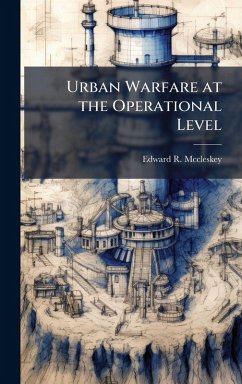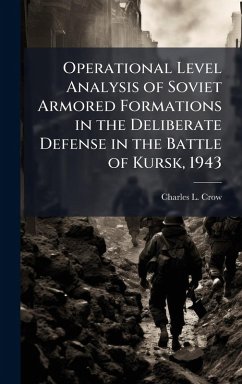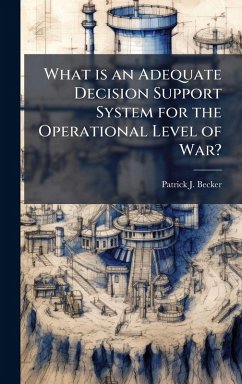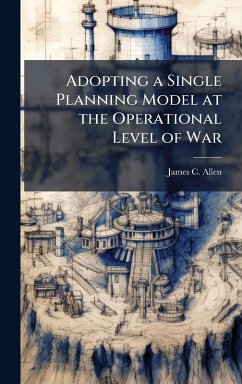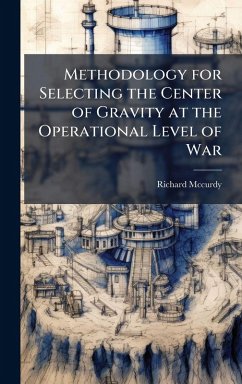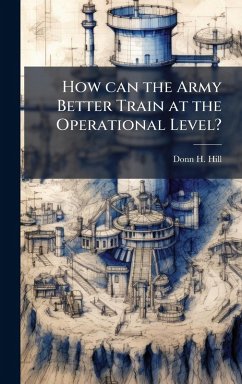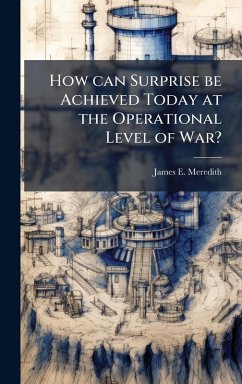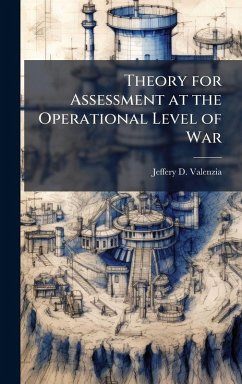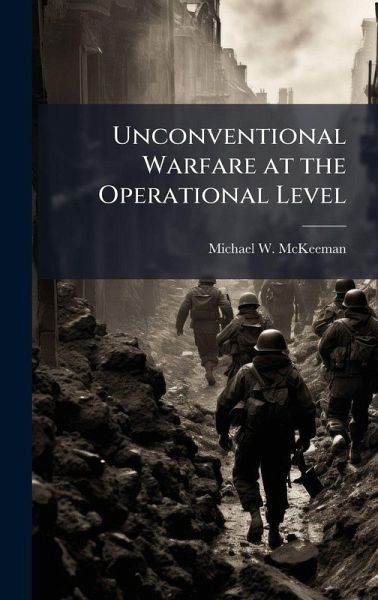
Unconventional Warfare at the Operational Level
Versandkostenfrei!
Versandfertig in über 4 Wochen
27,99 €
inkl. MwSt.
Weitere Ausgaben:

PAYBACK Punkte
14 °P sammeln!
The challenge modern strategists face concerns preparing for two disparate types of war. One war is conventional and employs forces in familiar ways. The other, more likely war is unconventional in that forces will fight behind enemy lines, relying on tenuous lines of communications. In both cases, the strategist must define the desired outcome, the resources available to achieve that outcome, and the ways to employ those resources. Whether conventional or unconventional, modern warfare requires operational design to bland the ways and means to achieve the end. This monograph draws together op...
The challenge modern strategists face concerns preparing for two disparate types of war. One war is conventional and employs forces in familiar ways. The other, more likely war is unconventional in that forces will fight behind enemy lines, relying on tenuous lines of communications. In both cases, the strategist must define the desired outcome, the resources available to achieve that outcome, and the ways to employ those resources. Whether conventional or unconventional, modern warfare requires operational design to bland the ways and means to achieve the end. This monograph draws together operational art and unconventional warfare. At the outset, this monograph reviews operational art and operational planning using the familiar framework of METT-T (mission, enemy, troops available, terrain, and time). With that construct, this paper analyzes these interdependent elements of operational planning and how they differ from the tactical level. Recognizing that these elements are not all-inclusive, this paper turns to common underlying operational factors - intelligence, sustainment, and leadership - which play crucial roles at the operational level. Next, this monograph turns to the Chindits operation in Burma in 1944. After reviewing the strategic setting, this analysis examines the Chindits operation using the same analytical framework. The result is a useful comparison of the Chindits operation and operational art. The study of the Chindits operation yields several significant conclusions for future consideration. First, training proves itself as a combat multiplier for both the tactical unit and the operational level staff. Second, military operations will always be driven and resourced by political decisions. Finally, as a way to employ means to achieve a strategic end, unconventional warfare blends well into operational art. This work has been selected by scholars as being culturally important, and is part of the knowledge base of civilization as we know it. This work was reproduced from the original artifact, and remains as true to the original work as possible. Therefore, you will see the original copyright references, library stamps (as most of these works have been housed in our most important libraries around the world), and other notations in the work. This work is in the public domain in the United States of America, and possibly other nations. Within the United States, you may freely copy and distribute this work, as no entity (individual or corporate) has a copyright on the body of the work. As a reproduction of a historical artifact, this work may contain missing or blurred pages, poor pictures, errant marks, etc. Scholars believe, and we concur, that this work is important enough to be preserved, reproduced, and made generally available to the public. We appreciate your support of the preservation process, and thank you for being an important part of keeping this knowledge alive and relevant.



